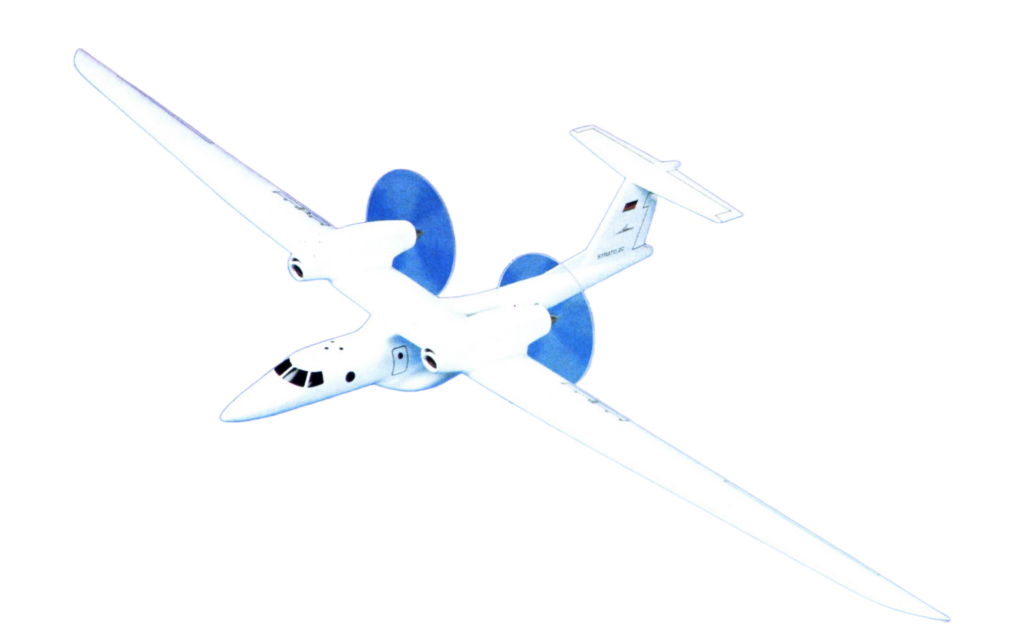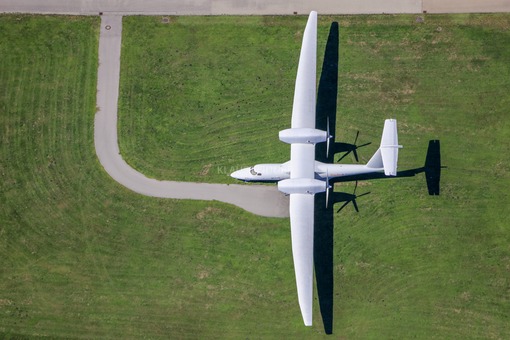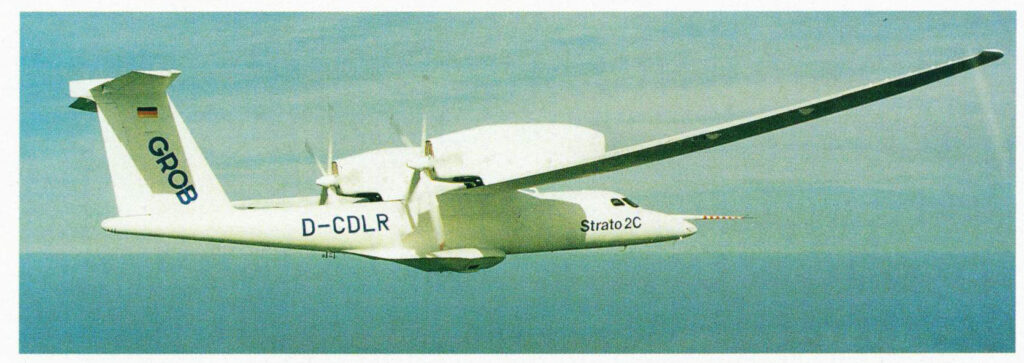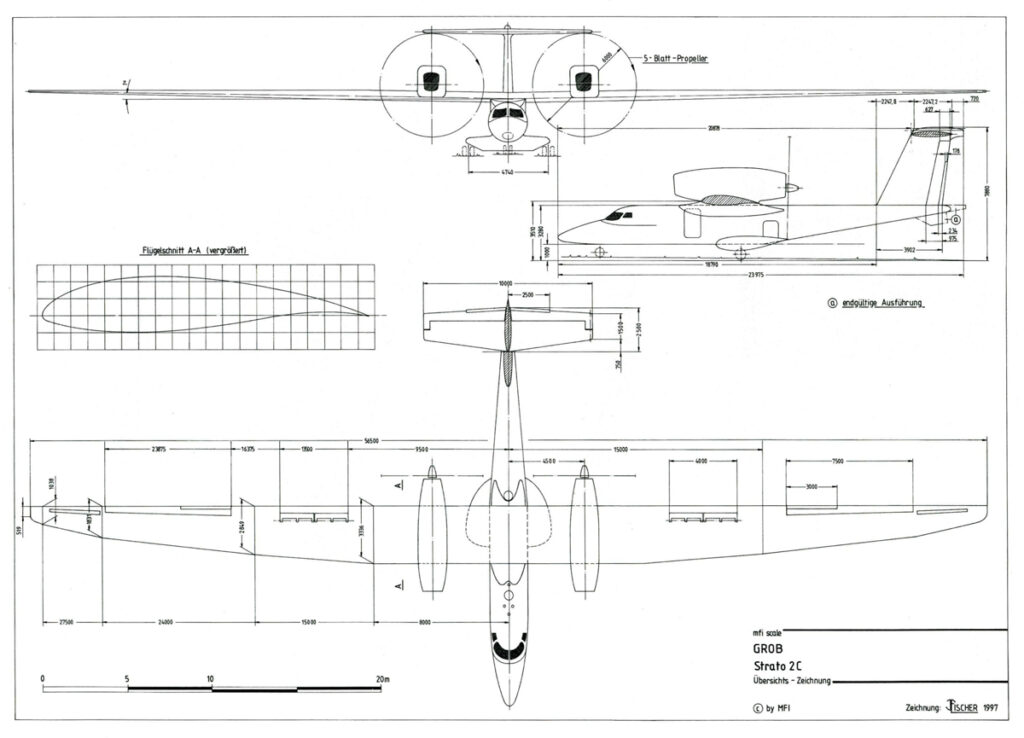
A short-distance / regional airliner that allows…
- affordable trips for average traveller
- extremely convenient flights – in terms of timing and location (departure/arrival)
- little to no impact on the environment (zero-emissions)
… is possible and not that difficult to develop as one might imagine.
Yes, aviation can be a pillar of sustainability. And this is a plan on how to develop it.
The end goal of the proposed project is the development of a zero-emissions commuter aircraft with the following characteristics:
- Capacity: 30 passengers
- Commercial range: minimum 1000 km
- Powertrain and fuel: hydrogen-electric, hydrogen stored as compressed gas
- Very low cost of operation and maintenance
- Allowing operations on small and very small airports
Flying is one of the best ways to travel, provided it is 100% sustainable. Flight connectivity between different national and European regions can be cheap, fast and green (see some information about today’s status of short-distance air travel in Europe). The creation of a future-oriented, pan-European mass transport network can be envisaged. Today, we do have the technology to develop an aircraft that facilitates this construction. We only need to demonstrate the feasibility of this technology – hence, the proposed development.
What this aircraft IS:
- a tool that allows the EU member states to greatly expand air connectivity within their national borders (domestic flights) and between European regions (international flights), in a completely climate-neutral approach.
- a fundamental brick in the development of a “greener” Europe, with low initial investment and high impact on average European’s lifestyle.
- designed to make people’s lives better. It fulfills a basic need – the need for mobility – in a sustainable and cost-effective manner.
What this aircraft IS NOT:
- a vehicle meant to compete with other zero-emission aircraft developed in Europe.
In a nutshell, what we propose is not the development of a simple aircraft, but the development of the fundamental brick that allows the creation of a sustainable, pan-European air connectivity network.
Let us start with the future and work our way back to the present.
→ It is now 2035
I am a European citizen. I want to travel from my home town (town, not city) to another town, across the country. I will definitely take a flight. This flight was introduced 2 years ago and it completely changed my life. There is no direct train connection between these two towns – the terrain is difficult. The journey by car would take me 10 hours. But I don’t have a car – I don’t need one. The journey by plane only takes 2 hours, and I don’t have to go to the big airport 150km from here to take the flight. The flight is operated from the small airport 5 km away. And, the good thing is that the flight is really, really cheap. At first, I thought this was a scam, such a low price was not realistic. But it turned out it was no scam. It really was that cheap. Last week I flew to my friend in the neighboring country. The same type of aircraft was operating the flight. The flight was quite enjoyable. I have never flown in such a silent aircraft before. And it is completely fueled by green hydrogen, so no pollution at all! I wonder why I needed to wait until 2035 to have the possibility of using such a convenient, cheap, silent, sustainable means of transport…
→ It is now 2030
The government of my country (a random EU country) is interested in the development of a national air transport network, that can easily be extended for ensuring connections with other European regions. The national air carrier of this particular country takes the responsibility of developing the fleet and ensuring the operations. The government of the country works with local authorities and airports for developing the required hydrogen refueling infrastructure. And they do this in particular in small and very small airports.
A convenient choice for the development of this air transport network is an aircraft developed from the Grob Strato-2C. For simplicity, we will refer to this aircraft as the Stratobus-30, since it has a passenger capacity of 30 seats.
The company developing the Stratobus-30 is a pan-European company, a joint-venture between different European institutions. The name of the company is Strato-Consortium.
→ It is now the end of 2026
Towards the end of the year, the Strato-Consortium was created, the company that will develop the Stratobus-30 aircraft on a commercial basis. The Strato-Consortium was created by the contributions of N partners that initially partnered for the development of the Stratobus-30 demonstrator. The Stratobus-30 is an entirely new aircraft, relying on a demonstrator developed in a Research and Development programme, that ran between 2023-2026. The company is funded from 100% non-public sources. Many investors (private persons, financial institutions, companies, etc) have shown interest in funding the Stratobus-30 development. The Stratobus-30 is a mature project, built on the findings of the R&D project that just ended. The risks associated to the investment are very low – the technical solution has already been demonstrated, the certification issues have been addressed, the operational challenges have been solved, even a pilot programme was run in which the aircraft performed some simulated missions, from a commercial airport. Moreover, an extensive market analysis was performed, people’s attitude towards this aircraft was investigated by means of social surveys. The budget for the commercial development of the aircraft was calculated with great accuracy, given the previous R&D experience. So, the investors are more than happy with this project. The project is very attractive, even for the investors that were traditionally interested in investing in fossil fuel projects. Or, in particular for these investors.
→ It is now the start of 2024
An exciting pan-European programme is about to start. Companies, universities, research institutes, governmental entities, airports, regulators, etc. from around Europe have formed a consortium animated by one great idea: the development of a hydrogen-powered aircraft demonstrator, based on the Grob Strato-2C platform. The programme is challenging, both from a technical and operational point of view, the associated cost is not insignificant. Nevertheless, the partners in the consortium cover a broad spectrum of technical skills. Taken together, they represent a real pool of knowledge, with total expertise of hundreds of years in aircraft and aeronautical sub-systems development. The development programme is backed-up by leading European institutions. It was not possible to identify a single source of funding for the entire development. The financial problem was overcome by aggregating different sources – from EU R&D funding mechanisms and national sources. Countries like Romania and Germany allocated substantial funds for the development. Other countries have also contributed. Clean Aviation JU funded a part of the programme. Hydrogen Europe JU funded another part.
→ Back in the present day
Based on a vision of the future, we try to put together a consortium for the development of a great vehicle – a hydrogen powered demonstrator based on the Grob Strato-2C aircraft. We are now sharing this vision with many institutions in Europe, in the hope that it would be of interest for them. For now, we do not have much to offer – we only have an idea, but we hope that many others will join us in making this idea come true.
• The final question: who is this “we” that is always used in the above description?
• Not the final answer: “we” is me, from Romania, a small company – ELSA Industry. It is also you, from another European country, an SME or big corporation, a university, a research institute. It is also you, a pan-European institution, like EASA. It is also you, a small (or not so small) airport in a big (or not so big) country in Europe (in the EU or not) that is willing to contribute to the development. It is also you, a public authority from a European country, that is interested in the programme – you may have knowledge and expertise that is useful for this development. So, in conclusion, “we” is actually “you” and everybody else dreaming the same dream, a dream of European collaboration for improving people’s lives, for developing the aircraft of tomorrow.
The aircraft platform proposed as basis for the development is the Grob G850 Strato-2C, an aircraft developed in Germany, between 1992-1997, by Grob Aircraft, a German aircraft manufacturer, in collaboration with the DLR – the German Aerospace Center. This was an atmospheric research aircraft, meant to ensure high endurance at altitudes up to 24000m (78700ft). The full development of the aircraft was abandoned when the aircraft was almost complete, as the allocated budget did not allow the aircraft to meet the required performance – it only reached a maximum altitude of 18000m (59000ft).
The aircraft development was followed by extensive flight campaign. Following the cancellation of the project, the aircraft is now conserved at Grob Aircraft’s headquarters, at Mindelheim-Mattsies airfield, in Germany.
Technical data and information about the Strato-2C project available in the Wikipedia article:
https://en.wikipedia.org/wiki/Grob_Strato_2C
Images with the aircraft:



Video
Additional information about the aircraft and its associated development, in the 1990s:
1. Article reporting the first flight (1995)
2. Article describing the experimental project (1996)
3. Article reporting the cancellation of the project (1996)
Why this platform?
One of the major problems with using hydrogen for propulsion is its onboard storage. The storage system becomes very heavy. It is, therefore, imperative to reduce the amount of hydrogen required for a given mission. In addition to increasing the performance of the aircraft by lowering weight, lowering fuel requirements also has a positive impact on the operational cost. It is somehow counterintuitive that for hydrogen-powered aircraft, decreasing consumption is not only desirable due to economic and environmental reasons, but also (and mostly) due to performance-related reasons.
So, how can the overall hydrogen consumption be lowered? The secret lies in the aerodynamic performance of the aircraft. High performance (high lift to drag ratio) means low power requirements which, in turn, translates into low hydrogen consumption. One of the methods of obtaining high aerodynamic performance is to increase the Aspect Ratio of the wings: long, slender wings will always perform better, from an energetic point of view, than short, wide ones. The ideal aircraft would look like a big sailplane. This is exactly the design characteristic exploited by high-altitude platforms, like the Grob Strato-2C.
In support of this idea, you can have a look at a comparative techno-economic analysis between two similar capacity aircraft: the Grob Strato-2C (able to accommodate 30 passengers, with modifications) and the Dornier 328. Both aircraft are assumed to be converted for hydrogen-electric operations, and their energetic performance is assessed on a hypothetical 1400 km mission. The costs associated with the powertrain and operation are calculated.
Comparative analysis – Strato2C vs Dornier328
The main points of this comparative analysis:
- the mass of the hydrogen powertrain for the Strato-2C based passenger aircraft is ~4.5 times lower than the powertrain mass of a similar capacity hydrogen-powered aircraft.
- The Strato-2C can be fueled with compressed gaseous hydrogen, while an equivalent aircraft requires cryogenically-stored liquid hydrogen.
- The cost of the hydrogen powertrain is ~5 times lower for the Strato-2C than for other, similar aircraft
- The integration of the hydrogen powertrain is much easier on the Strato-2C, without an impact on the aircraft passenger capacity
- The cost of energy per mission for a Strato-2C-like aircraft is ~3 to 5 times lower than for an equivalent aircraft.
As you might have noticed by now, this is not a project, but a development programme. The difference is that it is composed of two phases:
- A Research and Development phase, in which the technology is developed and de-risked. This phase will be funded by research grants.
- A Commercial Development phase in which the aircraft will be developed, in large numbers, using private funding. This second phase is a pure industrial development, with no research component.
The initial phase, dedicated to the research and development, contains a series of activities. These activities are required for progressing with the concept from the current status (the experimental aircraft Strato-2C lying under the sun in Mindelheim-Mattsies, most likely, in a non-flight-worthy condition) to a point in which a demonstrator is flight proven and its mission is demonstrated by means of a pilot program on a commercial airport. This phase is, therefore, concerned not only with the technical development, but also with the study and characterization of the operational (including regulatory) and socio-economic aspects.
A non-exhaustive list of activities foreseen for the research and development phase of the project is included hereafter. This list will need to be enriched with input provided by different partners, each with a different perspective on the development. Collaboration is the key of such a development.
Most likely, this research and development phase cannot be structured as a unitary project, due to the unavailability of the total amount of the required funding, as a lump sum. As an alternative, multiple sources of funding will be identified, each with its own set of rules and indicators. Consequently, these activities will be grouped into multiple projects. Each project will be focused on a certain aspect of the development but in the end, the individual outcomes of these projects will be collated into a complete set of deliverables that represent the final set of deliverables for this R&D phase: a flight-tested aircraft demonstrator, with a detailed operational model characterization, ready to be certified and suited for being presented to European governments, together with firm commitments on the final price and date of delivery. This is all the required input for the initiation of the second phase – the commercial development.
These activities are meant to ensure that the aircraft is developed and tested to a satisfactory level, for allowing operations.
T – Technical part
T1 – Development of the aircraft
T1.1 – Numerical studies
- Development of a flight/mission performance aircraft model
- Optimization of the aircraft design
T1.2 – Cabin extension and adaptation
- Removal of non-required equipment (e.g. scientific instrumentation)
- Cabin extension for accommodating 30 seats (add extra fuselage frames)
- Equip cabin with interior elements for passenger transport (seats and luggage compartments)
- Add a cargo hold under the passenger cabin
T1.3 – Structural reinforcement
- Reinforcement of the structure for allowing operation in inclement weather and turbulent conditions
- Evaluate the necessity of and design/implement wing truss elements for increasing wing load capability
T1.4 – Folding wings
- Design – manufacture – test – integrate – certify a wing folding system. The high wing span (56 m) makes operations on small and very small airports very difficult.
T1.5 – Systems
- Remove existing, old avionics and install modern systems
- Design – manufacture – test – integrate an ECS (Environmental Control System), for allowing cabin pressurization
- Increase the load capability of the landing gear for allowing operations on low quality runways
- Install state of the art systems allowing GPS-based landing in VFR airports, in low visibility conditions
- Install electric motors in the main landing gear wheels for allowing STOL operations in some airports (decision to be made only after a tradeoff study)
T2 – Development of the powertrain
T2.1 – Hydrogen storage
- High mass fraction pressurized tanks for hydrogen onboard storage will be designed, manufactured and tested (Type IV or V)
T2.2 – Fuel cell stack + battery pack
- Develop a hybrid powertrain (hydrogen fuel cells + batteries), together with the associated power management and thermal management systems.
T2.3 – Electric systems
- Develop and test high power density motors for the propulsive needs.
- Develop and test high power density motors for an extra power boost during the take-off phase (motors to be implemented in the main landing gear) – to be decided following a tradeoff study
T2.4 – Propellers
- Develop, test and certify dedicated high-efficiency, low noise propellers.
T3 – Testing
T3.1 – Ground testing
- Perform extensive ground tests for all the equipment: structural tests (static, dynamic, fatigue, etc.), functional tests (in design and off-design conditions), electromagnetic compatibility tests, etc.
T3.2 – Flight testing
- Perform extensive flight tests of all embedded systems
T3.3 – Certification
- Certify individual systems – the ones that are mature enough not to change should a serial production be initiated
- Obtain flight-test licensing of the complete demonstrator
O – Operational part
These activities are meant to evaluate and develop solutions for the operational challenges of the aircraft.
O1 – Airport infrastructure
- Perform a study on the required airport infrastructure for the operation of the aircraft: flight operations, passenger and cargo handling, fueling/refueling, etc.
- Study the potential of using the same hydrogen infrastructure for other modes of transport as well, outside of the airport (e.g. for personal vehicles or for public transport – buses, trains, etc)
O2 – Operational modes
- Perform a study of different modes of operations, in particular the train-like operation. Focus on very fast passenger/cargo processing to reduce the time between landing and take-off to ~15min.
O3 – Pilot use case implementation
- Based on the above-mentioned studies, implement a pilot use case in an existing airport
- Simulate operations with volunteers (not actual passengers)
- Revisit the above-mentioned studies for addressing the issues identified in the pilot use case
S – Socio-economic part
These activities are meant to investigate how such an aircraft would be perceived by the large public and identify the social needs that can be satisfied by the aircraft design and operations
S1 – Market study
- Study the mobility needs in different regions of Europe (determine patterns applicable on different regions with similar characteristics)
- Investigate the desire of European governments to implement hydrogen-powered air transport networks
- Determine the incentives airlines would require for implementing such air transport networks
- Estimate sales potential as a function of a number of indicators that can be changed by political power
- Identify the elements that can be addressed at political level (national and European) for facilitating the implementation of such air transport networks
S2 – Social studies
- Investigate social perception on the implementation of regional and European air transport networks based on this aircraft. Would people use this transport method? Why yes or why no? What needs to be done to make it more attractive? How could air transport be modified to substitute long range road/train travel?
S3 – Economic analysis
- Create a detailed cost structure for the aircraft, resulting in a total cost per unit in the scenario of serial production
- Produce a cost structure for the commercial development phase. What is the required private investment for the development of a production line for 10, 100, 1000 aircraft?
- What are the sales projections and how/when could the initial investment be recovered?
Timeline
A rough estimation of the timeline for the R&D phase of the development programme is shown hereafter. This timeline is prone to evolve, as more programme partners provide their input and as various funding sources are identified. Nevertheless, this very preliminary timeline provides an indication of the envisaged development as seen at this point in time (April 2023).

Funding
The total required funding for the R&D phase of the development programme is between 90 – 100 mil €, broken down as:
- 80 – 85 mil € for the Technical part
- 10 – 15 mil € for the Operational part
- 0.5 – 1 mil € for the Socio-economic part
Of course, the accuracy of these budgetary estimates is to be improved once more input from the development partners becomes available.
100% of the costs of the R&D phase of the development will be covered by non-reimbursable grants.
Ideally, the entire amount will be made available by a single funding entity. Nevertheless, the likelihood for this to happen is quite low. As an alternative, the following sources of funding will be targeted:
- 50 mil € from national R&D budgets (composed of contributions of different countries)
- 50 mil € from EU funding mechanisms. It will be ensured that a situation is avoided in which two or more different funding sources are used for the same activity.
When it comes to national funding, ~ 15 mil € have been identified, in Romania, as being available for this project with high probability. Additional ~ 15 mil € can be made available in Romania, provided the development programme is backed up by European institutions, like Horizon Europe.
For increasing the likelihood of obtaining funding from national sources (national R&D funds), help from the programme partners would be very much appreciated. This help can come in the form of information or actual discussions with their national funding organisms.
What must be strongly emphasized, once again, is that the development programme, as it is imagined at this point, is not financially benefitting one company, institute, any other organization, and not even a given country. It is imagined as a collective development effort. The outcome of this effort, in the long term, is beneficial for all the European countries. The hydrogen powered commuter aircraft will allow policy makers to orient the transport policy of each individual country and that of the European Union towards serving the average citizen and also drastically decarbonizing transportation. The cost of the envisaged development is insignificant compared to the benefits this system might have on the long term.
Deliverables
There are three big categories of deliverables for the R&D phase of the development programme, in line with the structure of activities:
- Technical deliverables. These incorporate the aircraft demonstrator, flight proven. They also incorporate a long list of technologies developed and matured in the project. At the end of the R&D phase, each technology will have a TRL of at least 7.
- Operational deliverables. These incorporate a set of studies and one documented use-case in which real passenger transport missions had been simulated in a real setup. Various operational modes will be tested in the use case for assessing the capabilities of the aircraft and for demonstrating that these capabilities are sufficient for meeting the operational demands for each mode of operation.
- Socio-economic deliverables. These incorporate studies on the public perception of the aircraft and potential air transport networks relying on it, at individual, community and governmental level. Additionally, a set of market analyses and economic predictions will be produced in this deliverable set.
One additional major deliverable of the R&D phase is the consortium itself. At the end of the project, a pan-European company will be formed, the Strato-Consortium, and all the partners that wish to participate in this company (and are legally allowed to do so) will secure a stake in the company. For those partners that are not willing or are not able to join it, clear IP management rules will be established.
When analyzing the potential market for such an aircraft, one needs first to consider the competitivity of this aircraft with other, existing aircraft of similar performance and capacity. Purely on this basis, 3 potential markets can be identified as suitable for the proposed aircraft:
- A drop-in replacement of existing short-range, low-capacity aircraft
- Air cargo and special transport missions
- Island hoping
In addition, one needs to consider the specific advantages of this aircraft, allowing it to perform missions that are not accessible to other aircraft types:
- Train-like operations (completely new operational model)
- Point-to-point between secondary airports
More details about the market of such an aircraft can be obtained from the document Business and Market Analysis, available here.
Stratobus-30 – Business and market analysis – ELSA Industry – public
As stated before, this aircraft is not meant to be a product sold to airlines, thus competing with similar aircraft on a given market segment. The object of this development programme is not the aircraft itself, as a standalone product, but the potential of this aircraft to constitute the basis for the development of a pan-European air transport network. Once the decision makers (national governments and transnational institutions like the European Commission) have this tool available and ready to be used, completely new usage modalities are conceivable, modalities that, if considered today, might seem unrealistic.
This situation can be compared with the evaluation of the market potential of a new GPS mobile application, before the launch of the first smartphone, in 2007. The market existed pre-2007 as well, but at a completely different scale.
Even at this very early stage, when the entire development programme is still just an idea, the Romanian Ministry of Transportation and Ministry of Internal Affairs have expressed interest in this aircraft. Details about this expression of interest can be shared with you, if it is of interest.
If this development programme is of interest for you, please let us know either by dropping us a message at radu.cirligeanu@elsaindustry.eu or by filling this form.
The likelihood of identifying a single source of funding for the entire programme is low. As a consequence, the activity will be split into multiple R&D projects, each focused on a particular challenge, and having a dedicated source of funding. According to your expertise and eligibility, you can become part of one or more such projects.
We want to get in contact with as many institutions as possible, willing to collaborate for the development of this programme. If you think you can contribute and are interested in joining the effort, do let us know.
Also, do let us know if, following the expression of interest, you accept having your institution’s details listed in the section hereafter. The only purpose of this section is to show to other interested parties what is the potential pool of partners considering embarking in such an endeavor. Although there is no hard deadline for you getting in contact with us, we strongly believe the sooner this happens, the better.
Institutions having already expressed an interest:
- ELSA Industry – Romania – www.elsaindustry.eu
